by James Khan
Massage kneads toxins from the tissues, activates lymph drainage, stimulates glandular secretions, tones the joints, muscles and tendons, and helps the mind and body to relax.
Massage can be applied with the hands, fingers, elbows, knees, forearms and feet.
Massage is at the heart of most effective alternate health therapies. There are over 80 different types of massage and relaxation therapies and over 250 types of body work therapies which have an element of massage.
See: A-Z of Massage and Body Work Therapies for a list.
Holistic Five Pillar Massage Therapy
Holistic Five Pillar Massage is an eclectic form of tantra massage therapy that consolidates the most effective therapies in a simple container of five self contained parts.
Eclectic means built on a broad and diverse range of sources – sources that I have trained in, explored and practiced over the years. It is a synthesis of Indian and Chinese massage, breath and healing therapies with modern understandings of anatomy, physiology, bio-chemistry, psychology, psychotherapy, body psychotherapy, somatic psychology and body movement practices.
It’s an inclusive, non-clinical, holistic form of massage therapy that addresses the conscious and unconscious needs of the whole person. This includes the physical, the emotional, the sensuous, the energetic and the spiritual needs of a person.
Regular holistic five pillar massage practice is a form of self development that allows the giver and the receiver to guard what the taoists call ‘the Three Treasures’ (Energy, Essence and Spirit), while harnessing the energy of the cosmos (chi/prana) by specific focussed meditative breath, energy and body work.
The practice incorporates ancient Indian and Chinese massage traditions and healing practices including tantric, taoist, shiatsu, traditional thai yoga massage, yoga;, chi gung as well as emerging/modern massage and bodywork practices including holistic swedish massage, aromatherapy, hot/cold stones, partner/acro yoga, contact improvisation, reichian therapy, somatic body work and psycho-sexual release.
Each “Pillar” is a complete, self contained body of knowledge and training that together with the other four makes a comprehensive whole.
The five pillars are:
1. Breathing and Connecting – grounding, centering, energising
2. Conscious Touch – attention, focus, sensitivity and skills
3. Rocking and Releasing
4. Yoga Asanas: Postures, Positions and Movement
5. Modalities, Techniques and Massage Routines
Regular five pillar massage therapy practice will make the process automatic, natural, requiring no thought, free flowing and enjoyable for both the receiver and the giver.
It is a sacred meditative, physical and spiritual practice, where the thinking mind is allowed or persuaded to rest and not interfere with the exploration and enjoyment of the massage experience.
Holistic five pillar massage is something that needs to be learned and practised, rather then read about. You can start with a small amount of instruction and training and progress as far as you like.
We offer regular practical Holistic Five Pillar Massage courses, covering the theory and practice of five pillar massage, energy work, body work and meditation.
More details at: Holistic Five Pillar Massage Therapy
The fifth pillar of the five pillar massage training, includes, integrates and builds on the following massage modalities and techniques:
1. Swedish (Holistic) Massage
Swedish techniques are a valuable subset of traditional Chinese massage. It forms the basis of nearly all modern massage techniques as it was the first western form of massage training.
It was developed by Henrik Ling (1776-1839), and given forn by Dr Merger. Ling was a Swedish gymnast who learned massage techniques from his friend and fencing partner Ming, a martial arts and Tu Na (traditional Chinese massage) expert.
Swedish massage techniques include:
- Effleurage: Gliding strokes with the palms, thumbs and/or fingertips
- Petrissage: Kneading movements with the hands, thumbs and/or fingers
- Friction: Circular pressures with the palms of hands, thumbs and/or fingers
- Vibration: Oscillatory movements that shake or vibrate the body
- Percussion: Brisk hacking or tapping
- Passive and active movements: Bending and stretching
2. Aromatherapy
Aromatherapy, or the use of essential oils such as jasmine, frankincense, rose, ylang ylang in massage oil and perfume, dates from the Ancient Egyptians. It uses essential oil from plant materials for the purpose of effecting a persons mood or health. The massage techniques can be as used in other forms, in particular Swedish massage, but percussion strokes such as hacking and tapping tend to be avoided.
3. Shiatsu
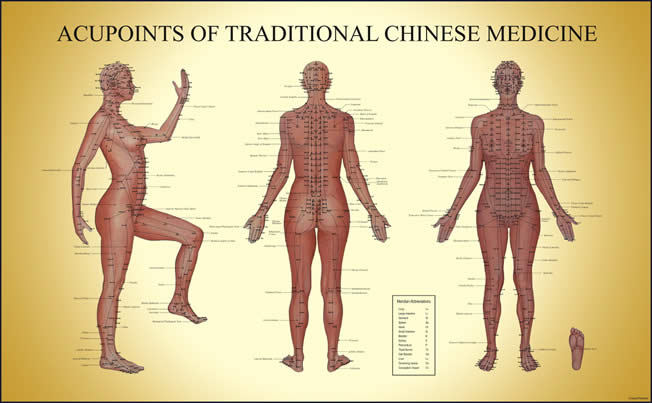
This is a modern Japanese form of an ancient art. It is a very thorough, very deep form of massage, provided the therapist is well trained. It is derived from the Chinese Tu na massage, with similar pressure points called tsubo.
Shiatsu is a direct descendant of this ancient massage practice.
4. Traditional Asian Foot Massage/Reflexology
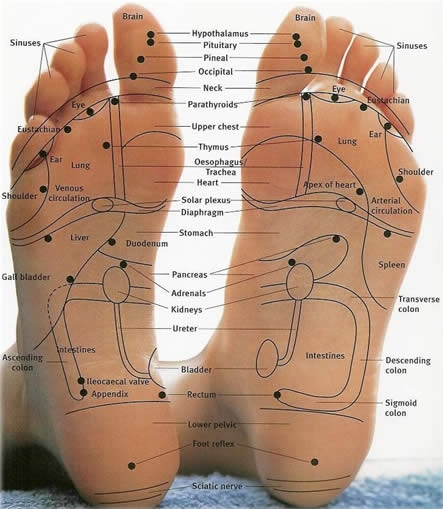
5. Traditional Thai Yoga Massage
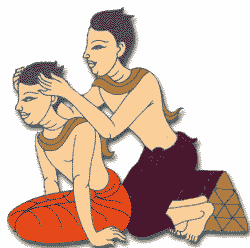
Based on ancient Indian massage techniques, and very similar in practice to Shiatsu. Which suggests that ancient traditions of India and China either shared or developed the same knowledge of human body, in particular the bodies energetic systems.
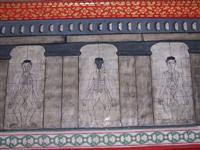
Thai Massage is very similar to Shiatsu/Tu Na but with elements of Indian yoga and ayurveda. It is some 2,500 years old, at a time when information flows from ancient india and chaina were common.
Thai massage is said to have been founded by Doctor Jivaka Kumar Bhaccha, who was from northern India and a contemporary of the Buddha and personal physician to the Magadha King Bimbisara.
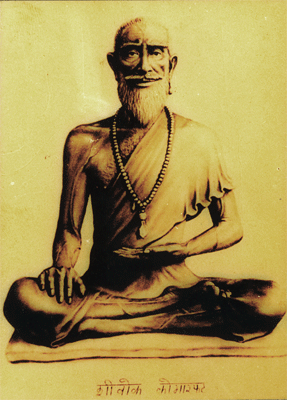
Bhaccha’s work consisted of manipulative techniques as well as instruction in proper diet, herbs and other secret energy or occult practices.
Before a practitioner performs this healing work, he or she first recites a mantra to this enlightened soul in Pali, the ancient sacred language of Theravada Buddhism, the language in which the Buddha taught.
This mantra is translated as:
“We invite the spirit of our founder, the Father Doctor Jivaka, who comes to us through his saintly life.
Please bring to us the knowledge of all nature, that this prayer will show us the true medicine of the universe.
In the name of this mantra, we respect your help and pray that through our bodies you will bring wholeness and health to the body of our client.
The goddess of healing dwells in the heavens high, while man kind stays in the world below.
In the name of the founder, may the heavens be reflected in the earth below so that this healing medicine may encircle the world.
We pray for the one whom we touch, that he/she will be happy and that any illness will be released from him/her.”
6. Indian Head Massage
Based on Ayurveda and Yogic traditions. Indian head massage (called Champi) is very thorough form of massage that gives possibly the best massage possible for the head, shoulders and face.
7. Bare Foot Massage
Chinese, Japanese or Indian bare foot massage (called Chavutti) is given using feet. In one Indian style the practitioner often uses a rope and lots of hot, spicy oils.
The massage is given using long and short rhythmic movements of the feet.
8. Hot/Cold Stones Massage
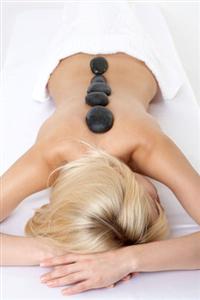
Hot and cold basalt stones are used, which help to relax the muscles, bring blood flow to the area and improve the effectiveness of the massage. Stones will be placed in certain areas, and typically the therapist will also use Swedish massage techniques while holding the stones to assist with the massage.
Along with basalt stones, natural clay can also be used as a grounding and healing therapy. The clay is gently massaged on to the skin, natural essences from the clay are allowed to slowly permeate the skin to heal the body with clay essence, minerals and trace elements. The stomes and clay help one connect with the earth, nature and the body.
9. Reflexology
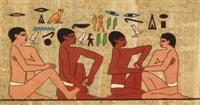
Also called Zone Therapy, reflexology involves massaging specific areas of the feet, hands and ears to effect other areas of the body and to improve general health.
Whilst the art of reflexology dates back to Ancient Egypt, India and China, it wasn’t until 1913 that Dr William Fitzgerald introduced this therapy to the West as ‘zone therapy’. He noted that reflex areas on the feet and hands were linked to other areas and organs of the body within the same zone.
In the 1930’s Eunice Ingham further developed this zone theory into what is now known as reflexology. She observed that congestion or tension in any part of the foot is mirrored in the corresponding part of the body.
11. Tantric Massage

Tantra is a form of self development that integrates the body, the heart and the spirit. Tantra aims to lead you to a state of supreme bliss, love and ecstasy.
Tantra dates from ancient times, and the tradition continues in secret in Indian Tantra, Buddhist Tantra and Tibetan Tantra.
Tantra is a spiritual practice where sensuality and spirituality, rather then being mutually exclusive, are both considered necessary to achieving union or oneness with divinity.
Benefits of Regular Massage
A. Physiological Benefits from Massage
Massage is a great way to relax the body. It allows the muscles and cells to relax, activates the para-sympathetic nervous system that works to slow down the body, and move you away from the stress filled, fight or flight mode of the dominant sympathetic nervous system.
Physiologically, massage brings increased blood flow to the area being massaged, which brings with it nutrients, oxygen and chi to the cellular system. It takes away waste products of metabolism, toxins and CO2 allowing the body to detoxify. Massage also helps the lymphatic system to flow and drain into the circulatory system, which helps the natural immunity of the body.

These and other physiological benefits from a regular massage are becoming more and more essential in counteracting the ill effects of the toxic, stress filled modern world.
It is well worth taking the time and expense to have a regular massage.
Massage should be received on a regular basis, and particularly during a detox program.
B. Non Physiological Benefits from Massage
Touch is an essential need for humans. Loving touch is comforting, it can help you feel connected, loved and happy. You can feel the sensuous pleasure of being alive, if you allow yourself to feel and be in the present moment.
During massage the body releases endorphins and other substances like oxytocin, serotonin, opomine, into the blood to engender feeling of happiness, love an well being.
There are also spiritual benefits as massage allows you to get out of your mind, out of your concerns, fears, worries by focusing on the body.
The common state where we are continuously thinking something, is actually an illness. Imagine if someone kept talking to himself, you’d say that he’s mad. Well this is what we do all the time, except that our incessant internal chatter is not spoken out loud, so no one tells us that we are ill.
Are you aware of a time when you were not thinking something? Where is all this thinking taking you – to vibrant life or to dusty death?
“All our yesterdays have lighted fools the way to dusty death”
In the modern world, we spend all our conscious time occupied by mental activities of one form or another. We allow them to occupy us because we ‘think’ that these mental ‘occupations’ are so important, so absolutely necessary, so all encompassing that we don’t have time to relax and drop them.
We don’t have time for the body, we don’t even know how to switch the occupying mind off, how to be free from it.
Life becomes “One damn thing after another” as Winston Churchill put it when asked to summarize the “History of The World”
We are very proud of our mind, of our very important thoughts. The human mind is said to be the one thing that distinguishes man from nature – well indeed it does!
What other creature on Gods green earth tortures, kills, maims and mutilates its own kind?
Cruelty has a human heart,
And Jealousy a human face;
Terror the human form divine,
And Secrecy the human dress.
This is because in the mind, unobserved, is a kind of illness, a mental affliction that chains one to the ego and allows such cruelties to take place. It is only when one is able to drop this identification with the robotic, occupying mind that the heart connection and love can flow in you and from you to other people.
Eastern techniques of meditation are specifically designed to allow one to drop the mind, drop the thoughts the plague and trouble one, and for a while, be free of the occupying mind.
Massage therapies, in particular the holistic five pillar massage therapy, can in the hands of an experienced therapist allow you to get out of this mental occupation, by taking time out to relax, bring the awareness into the breath and the living body, allowing you to genuinely enjoy being alive before it’s too late and our journey here on earth ends.
Email: retreats ‘@’ detoxifynow.com